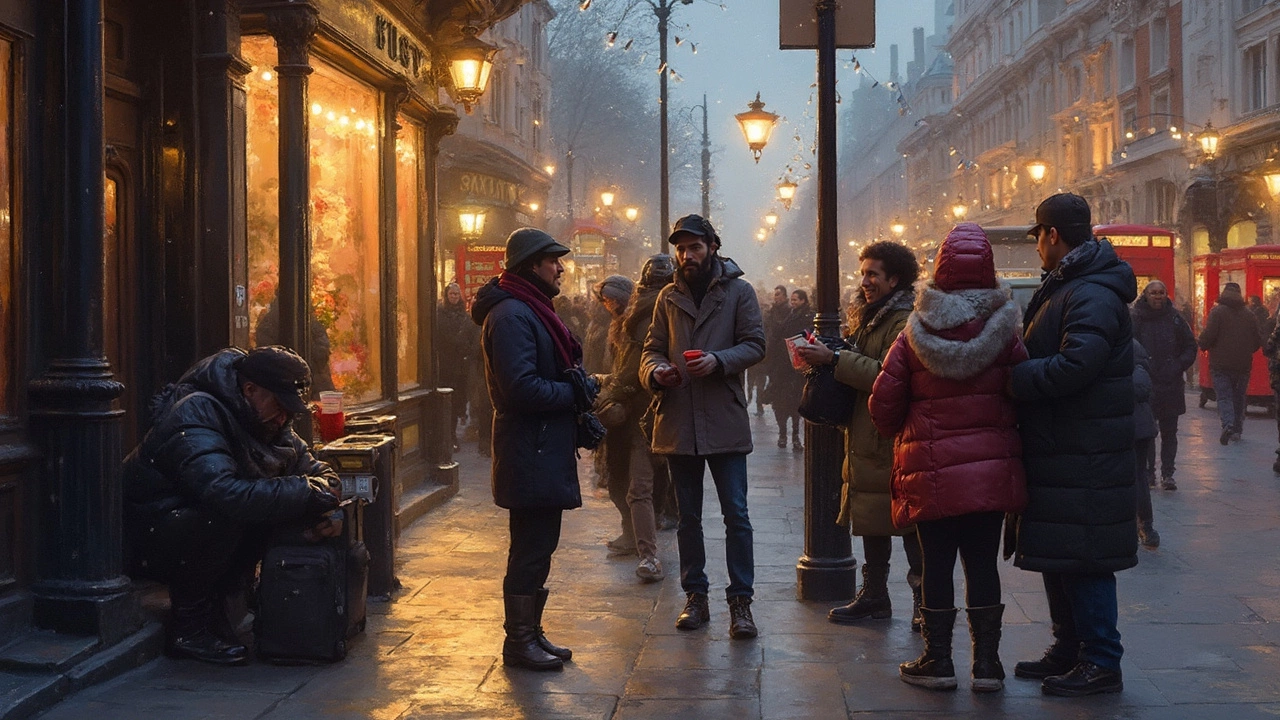Helping Homeless: Simple, Effective Ways to Make a Real Difference
Seeing someone without a roof can feel like a gut punch. The good news? You don’t need a huge budget or a fancy title to help. A few thoughtful actions can change a day, or even a life, for people living on the streets.
What People Really Need
Most charities say the most requested items are basics: clean socks, toothbrushes, soap, and non‑perishable snacks. A warm pair of gloves or a reusable water bottle also goes a long way. What you shouldn’t put in a care package? Items that are heavy, breakable, or restricted by local shelters – think candles, alcohol, or large electronics. Those things end up in the trash instead of helping anyone.
One quick survey of shelter volunteers showed that 78% of guests asked for fresh fruit, dental floss, and a good pair of socks. If you’re putting together a kit, start with a zip‑lock bag, add two pairs of clean socks, a travel‑size toothbrush and toothpaste, a bar of soap, a pack of granola bars, and a bottle of water. That’s all under £10 and instantly useful.
Need more ideas? Check out the "Most Requested Items by Homeless People" guide – it breaks down the top 10 items and why they matter. It also debunks myths like “people want money only”; many actually prefer tangible supplies that they can use right away.
Smart Ways to Donate
Donating cash is often the easiest for charities because they can buy exactly what they need. If you prefer physical donations, choose a local shelter that publishes a list of accepted items. Some cities even have “donation drop‑off nights” where volunteers sort and distribute supplies on the spot.
Avoid the temptation to fill a bag with random stuff you no longer need. Instead, spend a few minutes scanning the shelter’s website or giving them a quick call. That way you skip the hassle of returned items and keep the volunteers focused on helping, not inventory.
Another low‑effort option is to organize a neighborhood “care‑package day.” Invite friends over, grab a few zip‑lock bags, and follow the simple checklist above. Even one bag per family can add up quickly when a block of houses gets involved.
If you’re worried about legal issues like sleeping in public spaces, remember that many cities have designated safe‑sleep areas or warming centres during winter. Sharing that information with someone you meet on the street can be a lifesaver – it’s a non‑material way to help that often goes unnoticed.
Finally, keep an eye on local fundraising events. A “3 to 1” matching fundraiser, for example, triples every dollar you give, turning a modest contribution into a bigger impact. It’s a smart way to stretch your generosity without extra effort.
Helping homeless people doesn’t have to be complicated. Focus on the basics, respect the shelter’s guidelines, and use the power of community to multiply your effort. A small, thoughtful package or a quick donation can turn a rough night into a hopeful morning. Ready to get started? Grab a bag, check the list, and go make a difference today.

What Not to Give a Homeless Person: Heartfelt but Practical Tips
When it comes to helping homeless individuals, our intentions are often good, but knowing what not to give can be as important as knowing what to offer. Some well-meaning donations might actually cause more harm than good. From perishable foods that spoil quickly to unsuitable clothing, there are items best avoided. By providing smart alternatives and understanding their actual needs, we can make a real difference.